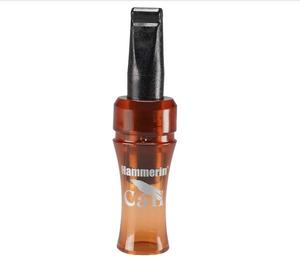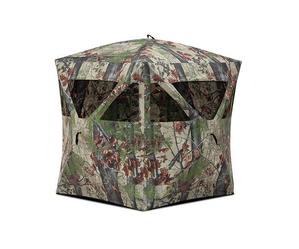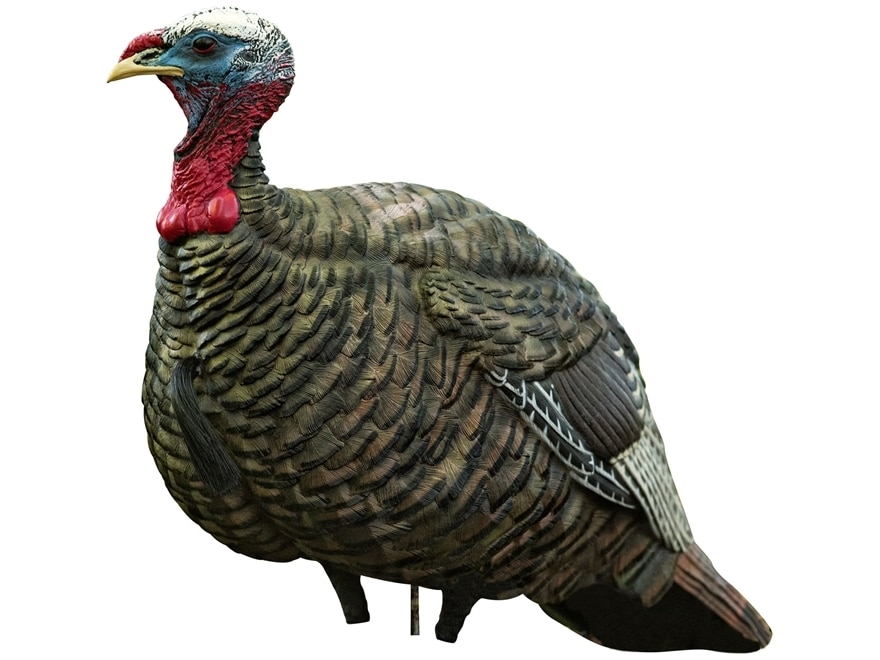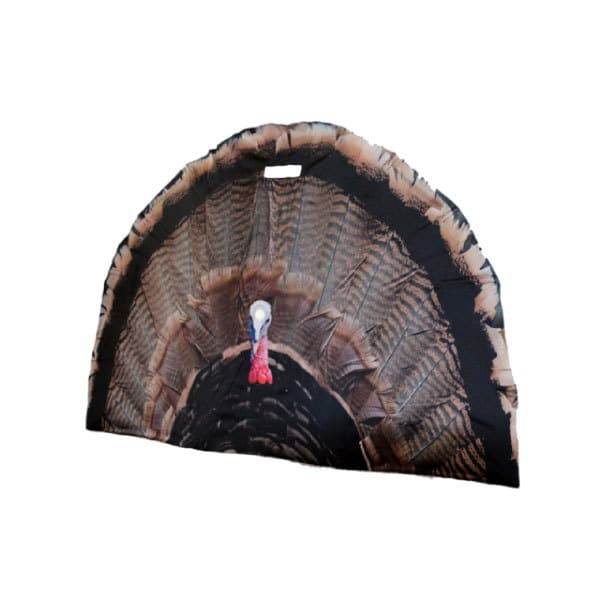When the deer hunting season is still a long way off, target or 3D practice might not be enough to scratch the avid bow hunter’s itch. Thanks to continuing wildlife conservation efforts, during the spring in North America you might be lucky enough to run into the wild turkey, a small game clever bird that will stretch your hunting and archery skills to the absolute limit.

Table of Contents
Bow Hunting Turkey: Step-by-step guide to a successful turkey hunt with a bow
In this article, we’ve decided to go through each and every steps you should follow to tackle a gobbler hunting challenge, from prey localization, to strategy and shot placement. Let’s get started!
1. Locate the prey

First of all, you will need to choose a woods area where the wild turkeys roosts might be, which is where you will hunt them. The roosts are usually located near their favorite feeding areas in the fields. Turkeys usually feed in the morning in the fields and then go roosting int the evening. Before the spring hunting season rolls in, drive close to the fields and look for flocks of turkeys feeding in the morning. Try to cover a large field area around the woods to locate at least one or two feeding areas.
Next, during the evening, you can spend time waling in the adjacent woods using a locator call to spot where they roost. We recommend the H.S. Strut Hammerin Turkey Locator Call, which is great for long range calling and proven in the field. Once you’ve gobbled a few turkeys out of the woods, you can pick a spot to set up for hunting in between the feeding area and the roosts. Strut zones where gobblers go attracting hens are also an excellent place to set up.
2. Bow hunting blind setup

Once you have picked one or more locations where you would like to hunt, the next step is to setup a well constructed bow hunting blind which will allow you to go undetected while you wait for the wily bird to cross those last few crucial yards before drawing your clean, lethal shot. While shotgun hunters can sometimes dispense with a basic blind, a properly designed and constructed ground blind is crucial for bow hunters for two reasons:
First, archers must wait until the prey is within 30 yards or sometime less before drawing their bow, while shotgun hunters can fire their shot from a far greater distance (50 yards or more). Second, the act of drawing the bow requires considerably more effort and movement than raising and aiming a shotgun, and wild turkeys are incredibly adept at spotting movement and, are extremely skittish.
For these reasons, when either DIY or choosing a bow hunting blind, it is imperative that it has enough room for the archer to draw the bow and is big enough to account for the upper limb of the bow which may extend above the archer’s head. It is also a good idea to choose or build a blind with apertures on more than one side, as you will be able to target birds coming in from any direction.
We recommend the Barronett Blinds radar, which has 5 trapezoid windows and is 67″ high, with a lot of much needed elbowroom inside.
3. Hunting decoy setup
If the wild turkey comes out of the woods in response to your calls, he will be alarmed to see your blind and will probably get nervous and run away. Hence, another wise thing to do is deploy a decoy meant to provide the wild turkey with something to focus on other than you as it comes in take a closer look.
Several decoy options are available along with numerous different methods for using them and based on your bow hunting turkey strategy and style. Let’s take a moment to familiarize with the most popular strategies involving the use of decoys.
1. One good option is using a hen decoy to attract the tom as he exits the woods looking for a jenny to mate with. If you’re opting for this method, try to place the decoy facing away from you, which will cause the gobbler to approach the hen decoy from behind, thus placing him between you and the hen decoy.
2. Another good method involves using a jake decoy to tap into the aggressive territorial response of a dominant male turkey. Again, try to place the decoy facing away from you and on using the gobble call the tom will approach with his facing you as he attempts to confront the jake.
3. One method that works very well is to combine multiple hen and jake decoys placed in different poses and postures. You could, for example, combine a hen decoy in mating position and place a jake decoy behind her to simulate the mating ritual. Or you could place a jake in alert position and another hen or jake in feeding position or relaxed pose. Upon gobble call, an alpha dominant male turkey will come out of the woods to confront the jake to defend his territory.
If you’re going to purchase a turkey decoy, I recommend those made by Avian-X, as they’re the most realistic and effective in simulating poses such as feeding and alert positions as well as hens receptive pose for the mating ritual.

4. Another strategy that works really well is the so-called “fanning” style of turkey hunting. This method is more proactive than those based on static decoys, and involves using a fanned turkey tail, or imitation to conceal your approach while stalking a a gobbler “on the move”, instead of waiting for him to come out of the woods. This method is deemed unsafe by many, as another nearby hunter unaware of what’s going on can mistake the disguise for an actual turkey and fire a shot.
However, this strategy is one of the most effective in bowhunting turkeys as it’s designed to trigger the aggressive response of a dominant Tom, which will naturally come in at close range thinking a competitor is approaching his territory. While we don’t recommend fanning due to safety concerns, if you feel up for a challenge, check out this bestseller fanned turkey decoy by Killer Gear, designed to look real and mimic the movements of a real gobbler.

3. Shot placement
Another factor that should be taken into account when bowhunting turkey is shot placement. Although some hunters still feel that aiming for the “vitals” (located on the lower side of the body, between the base of the wing and the thigh) results in the best shots, the wild turkey actually offers a larger target when facing the hunter broadside. Therefore, a broadside shot would be the easiest and most effective one for most archers. That being said, when a wild turkey is shot broadside he could still be able to take flight or at the very least run away. More often than not, when this happens the bird leaves little to no blood trail for the hunter to follow.
By positioning the decoys in such way that the gobbler is forced to face his back to you to approach them, you can fire a shot anywhere along the spine, thereby immobilizing the turkey instantly. As long as you’re firing within a twenty yards range, this shot is well within the capabilities of most fixed blade or mechanical broadheads, fired by compound bows or recurve bows,
Another good shot placement choice to cause instant damage would be the turkey’s head. On the other hand, aiming for such a small, constantly moving target at any distance is well beyond the skills of most archers. For this reason, , some broadhead manufactures are now making broadheads with extra-long blades that are specifically designed to outright decapitate a gobbler. Using these specialized bird hunting broadheads instead of the standard diameter ones you can now fire a neck shot. This shot is a much easier kill than the head one as the neck area is wider and dead-end accuracy is not required due to the extra-long cutting diameter,
Conclusion
To conclude, if you are one of those bow hunters who cannot wait until the coming of deer season each fall and laments the lack of legal hunting opportunities during the rest of the year, you should give spring turkey hunting a try. Start by locating the turkeys feeding and roosts area and then hunt them from a well designed ground blind, using gobble calls and decoys to lure them out of the woods. Pay attention to your shot placement and invest in a good bow and specialized arrow broadheads to maximize your chances of a successful spring turkey hunt.
More useful Bow Hunting articles
Enjoying bow hunting? Take a look at some of the most popular bow hunting articles below. Oh, and don’t forget to subscribe to our newsletter to never miss on the next guides and the best deals!
Did you enjoy this article?
We hope you enjoyed reading this bow hunting article and that you found it useful. If you have any suggestions or comments, do not hesitate to get in touch.
If you liked this bow hunting article, why not share it on your social media to let your friends and fellow archers know!


